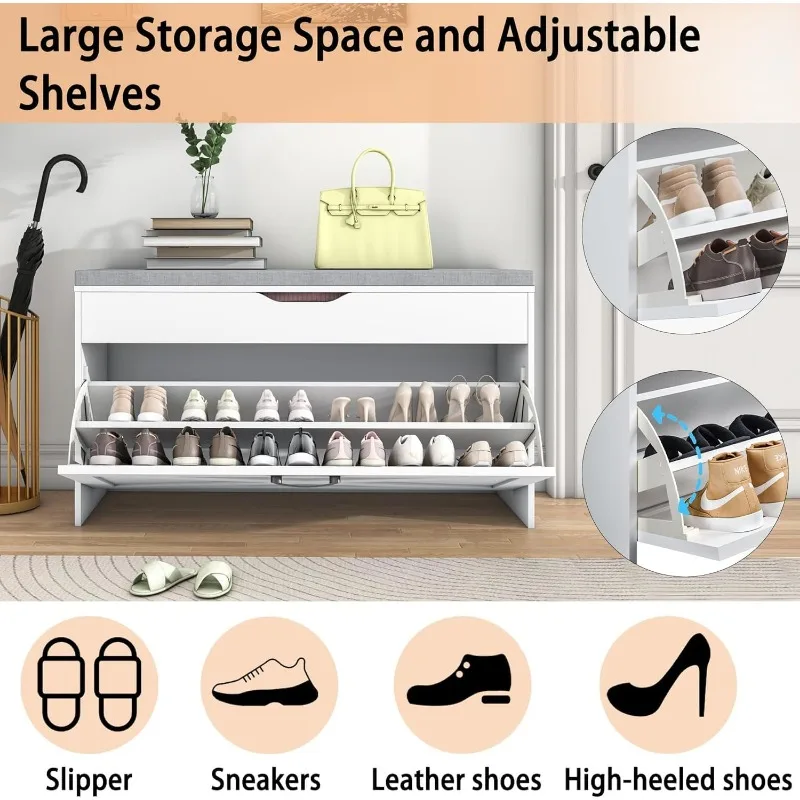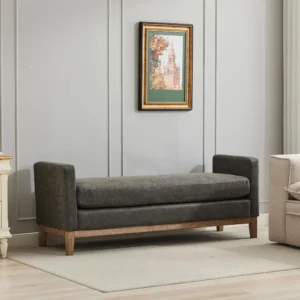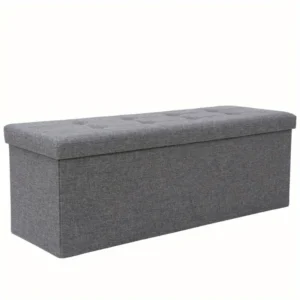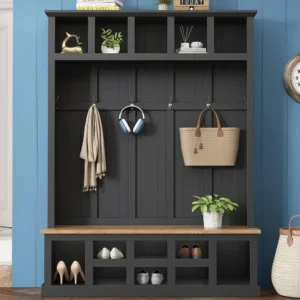Introduction: Why Your Entryway Organization Matters
Your entryway serves as both the first impression of your home and a busy transition zone where everyday life happens. It’s where you begin and end each day, where guests form their initial opinions of your space, and where family members often collide in the morning rush. When this crucial area becomes cluttered with shoes, coats, bags, and miscellaneous items, it creates unnecessary stress and inefficiency in your daily routines.
A disorganized entryway doesn’t just look messy—it actively works against you. How many mornings have you spent frantically searching for keys or a missing shoe while running late? Creating an organized, functional entryway transforms these daily transitions, making arrivals and departures smoother while reducing the overall stress in your home.
The benefits of a well-organized entryway include:
* Streamlined morning routines
* Easier arrivals after long days
* Less time spent searching for essentials
* Reduced visual stress when entering your home
* A welcoming first impression for guests
Understanding the fundamental principles of entryway organization is the first step toward creating a space that works for your unique household needs. This comprehensive guide will walk you through transforming your entryway from a cluttered catch-all to a functional, beautiful space.
I. The First Step: Assess Your Entryway Needs
Understanding Your Space
Before purchasing storage solutions or rearranging furniture, take time to evaluate your entryway’s specific challenges. Consider its size, natural traffic patterns, and how the space changes with different seasons. A small apartment entrance requires different solutions than a spacious foyer, and a family of five has different needs than a single person.
Identifying User Patterns
Think about who uses your entryway and what items they regularly need. Do you have children who need lower hooks for backpacks? Do you need space for pet supplies? Are there elderly family members who need seating to remove shoes? Creating a truly functional entryway means designing for your actual household members and their specific habits.
Recognizing Limitations and Strengths
Every entryway has natural advantages and constraints. Perhaps yours has high ceilings (great for vertical storage) but limited floor space. Maybe it lacks natural light or has an awkward layout. By honestly assessing these factors first, you’ll make better decisions about organization solutions. Understanding how to properly organize shoes in your entryway will be particularly important, as footwear is often the biggest source of entryway clutter.
II. Clear the Canvas: The Complete Entryway Purge
A successful entryway transformation begins with a complete reset. Starting with an empty space allows you to see possibilities more clearly and make intentional decisions about what returns to this valuable area.
Follow these steps for an effective entryway purge:
- Remove absolutely everything from the space—furniture, wall hangings, items in baskets, everything
- Clean thoroughly while the space is empty (floors, walls, baseboards)
- Sort all removed items into three distinct categories:
- Keep in entryway (essential items used regularly)
- Relocate elsewhere in home (items that don’t belong)
- Donate/discard (items no longer needed)
- Be honest about what truly belongs in this high-traffic zone
When sorting, you may encounter emotional attachments to items that create clutter. That decorative bowl constantly filled with random objects? The hook rack you never actually use? Be realistic about whether these items serve your entryway’s primary function. The process of organizing a busy entryway space requires tough decisions, but the results are worth it.
III. The Entryway Essentials: What Actually Belongs
After your purge, carefully consider what truly deserves valuable entryway real estate. The most functional entryways contain only what’s needed for coming and going, with minimal extras.
Core entryway essentials typically include:
- Current-season outerwear (coats, jackets, rain gear)
- Everyday footwear (limit to 1-2 pairs per person on display)
- Frequently used accessories (bags, hats, scarves)
- Keys, wallets, and phone landing spots
- Basic weather items (umbrella, sunscreen)
The guiding principle for entryway organization should be frequency of use. Items used daily earn prime positions in easy-to-reach locations. Items used weekly can have secondary spots. Anything used less frequently should likely live elsewhere in your home.
Consider implementing a “one in, one out” rule, particularly for shoes and coats. When a new jacket enters the rotation, an older one moves to a closet. This prevents gradual accumulation that leads back to clutter. Modern entryway storage with integrated seating provides practical solutions for keeping essential items accessible but organized.
IV. Smart Storage Solutions for Every Entryway Size
The right storage pieces transform a cluttered entryway into an organized haven. When selecting storage solutions, consider both functionality and how pieces will fit your specific space constraints.
Small Entryway Solutions (Under 4 feet/1.2m wide)
- Wall-mounted narrow shelf with hooks beneath (depth under 6 inches/15cm)
- Over-the-door organizers for shoes and accessories
- Slim console table (under 12 inches/30cm deep) with baskets underneath
- Vertical storage systems that maximize height rather than width
- Corner shelving units that utilize often-wasted space
Medium Entryway Solutions (4-6 feet/1.2-1.8m wide)
- Storage bench with shoe compartments underneath
- Wall-mounted cabinets paired with open hooks
- Combination mirror/hook/shelf units
- Dedicated umbrella stand paired with shoe rack
- Floating shelves above coat hooks for seasonal items
Large Entryway Solutions (Over 6 feet/1.8m wide)
- Full hall tree with bench, hooks, and cabinet storage
- Built-in mudroom-style cubbies for each family member
- Combination of closed cabinetry and open display storage
- Dedicated zones for different functions (shoes, outerwear, accessories)
- Decorative console with organized drawer storage
When space is limited, look for multi-functional pieces that serve double duty. Many of our storage benches provide both seating and storage, making them perfect for smaller homes where every inch counts.
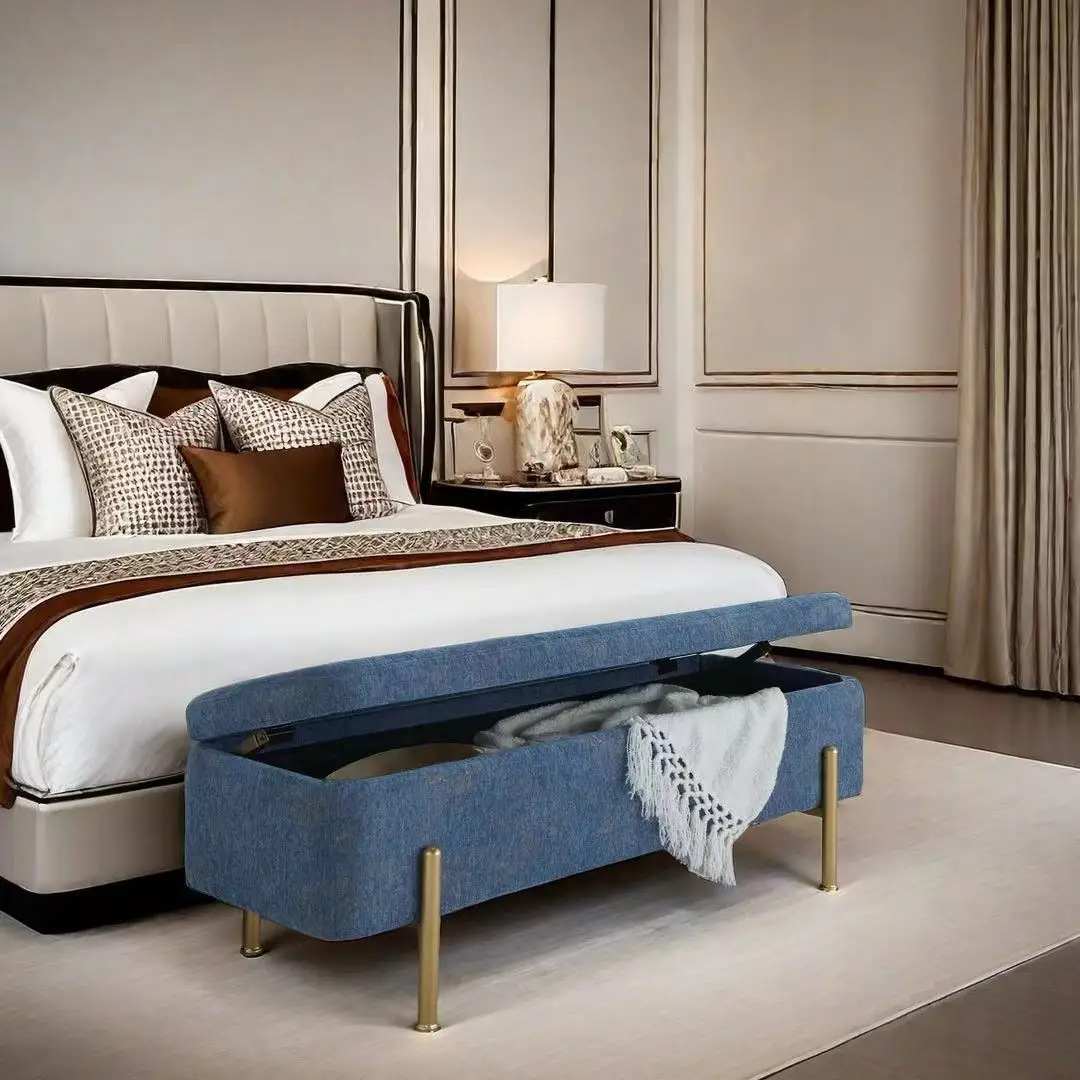
V. Tackling the Top Entryway Clutter Culprits
Shoes and Footwear Management
Shoes often create the most visible entryway clutter. Establish a system where only current-season, regularly worn shoes earn space in your entryway. Implement a rotation system where family members keep just 1-2 pairs in the common area, with remaining shoes stored in closets or bedrooms.
For wet or muddy footwear, create a designated area with a water-resistant tray or mat. This prevents moisture damage to flooring while containing dirt. Boot trays with raised edges work particularly well for this purpose. Many entry benches with dedicated shoe storage provide specialized compartments that keep footwear neatly contained and off the floor.
Coat and Jacket Control
Hanging space is essential, but limited entryway hooks often become overloaded. Establish a capacity limit for your coat storage, and rotate items seasonally. Heavy winter coats should be relocated once spring arrives, and specialized items like formal outerwear should be stored in closets.
Consider a two-tier hanging system with higher hooks for adults and lower ones for children. This maximizes vertical space while teaching children to hang their own items. For homes with limited wall space, over-the-door hooks or portable coat racks can provide temporary seasonal solutions.
Small Item Containment (Keys, Mail, Accessories)
Small items quickly create visual clutter when left without designated homes. Create specific “landing zones” for essentials:
- A small dish or hook system specifically for keys
- A mail sorter with separate slots for action items and recycling
- Labeled baskets for gloves, hats, and scarves
- A charging station for electronic devices
- A small drawer or container for sunglasses and other accessories
The key to small item management is creating obvious, easy-to-use homes for these items, making it simpler to put things away than to leave them out.
VI. Creating Functional Zones in Your Entryway
Thinking of your entryway in terms of distinct functional zones helps create natural organization and flow. Even in small spaces, subtle divisions between these areas improve efficiency and reduce clutter.
The Drop Zone
This area serves as the immediate transition point where items are removed when entering—coats, bags, shoes, keys. It should include hooks, a surface for placing items, and shoe storage. Position this zone closest to your door for convenience.
The Transition Zone
This secondary area contains items needed less frequently or by specific family members—children’s backpacks, seasonal accessories, pet supplies. It’s typically positioned slightly farther from the door but still readily accessible.
The Preparation Zone
This area supports getting ready to leave home—a mirror for last-minute checks, a bench for putting on shoes, possibly an umbrella stand or weather station. This zone ideally faces the drop zone for easy access to outerwear before departing.
Creating visual and physical boundaries between zones doesn’t require walls—different storage styles, floor coverings, or simply the arrangement of furniture can define these spaces. Quality shoe benches designed specifically for entryways provide natural zone division while keeping everything organized.
VII. Small Space Solutions: Maximizing Minimal Entryways
Limited space doesn’t mean you can’t have an organized entryway. The key is maximizing every available inch through strategic choices:
Go vertical – Use wall space from floor to ceiling with tall, narrow storage units or stacked floating shelves.
Choose depth carefully – Select shallow furniture (under 12 inches/30cm deep) to prevent narrowing walkways while still providing storage.
Utilize behind-door space – Over-door hooks and hanging organizers add storage without taking up floor space.
Consider folding or nesting furniture – Folding hooks, drop-down desks, or nesting stools provide function when needed but can be collapsed when not in use.
Use mirrors strategically – Mirrors reflect light and visually expand tight spaces while serving a practical function.
Create overflow systems – Designate nearby closets or storage areas for rotating seasonal items that won’t fit in your limited entryway.
Prioritize ruthlessly – In truly small spaces, only the most essential daily items earn a spot in the entryway.
Finding the right space-saving entryway ideas can transform even the tiniest entrance into a functional, organized space that serves your daily needs without feeling cramped.
VIII. Family-Friendly Organization: Systems Everyone Can Follow
Creating systems that work for your entire family—including children—is essential for maintaining entryway organization long-term.
Design age-appropriate storage solutions that empower even young family members to maintain order. Lower hooks installed at children’s height encourage independence in hanging up coats. Color-coded baskets make it easy for kids to find their belongings. Picture labels help non-readers identify where items belong.
Establishing consistent routines makes organization automatic rather than a constant battle. Create simple arrival and departure rituals—shoes go directly in bins, coats on designated hooks, backpacks in cubbies. After a few weeks of gentle reminders, these habits become second nature.
For reluctant family members, focus on the benefits of organization rather than nagging about mess. Demonstrate how much faster morning departures become when everything is in its place. Consider creating a simple reward system for younger children who consistently maintain their entryway organization.
Comprehensive hall tree storage systems provide complete organization solutions that work well for families, with dedicated spaces for each family member’s belongings.

IX. Seasonal Transitions: Keeping Your Entryway Adaptable
Your entryway needs change significantly throughout the year, from bulky winter gear to summer essentials. Creating a seasonal rotation system prevents overflow and keeps your space functional year-round.
Implement a quarterly reassessment of your entryway when the seasons change. Remove out-of-season items and store them elsewhere—heavy coats in summer, beach bags in winter. This creates space for current needs while protecting off-season items.
During transitional weather periods, when multiple seasons’ items might be needed simultaneously, prioritize space for the current season while keeping limited transitional pieces accessible. For example, in early spring, keep a few light jackets handy while moving heavier winter coats to secondary storage.
Weather-specific considerations should also guide your seasonal adaptations. Rainy seasons require space for wet umbrellas and raincoats, while winter demands storage for boots, gloves, and scarves. Mudroom benches with dedicated shoe storage provide excellent solutions for managing seasonal footwear transitions and keeping weather-specific items organized.
X. Beyond Function: Adding Style to Your Organized Entryway
A well-organized entryway can also be beautiful. Once the functional elements are in place, thoughtful styling creates a welcoming entrance that reflects your home’s character.
Balance aesthetics and functionality by selecting storage pieces that complement your home’s design aesthetic. A storage bench with beautiful upholstery serves both practical and decorative purposes. Wall hooks can be both functional and visually interesting when chosen thoughtfully.
Add simple decor elements that don’t create clutter—a slim vase with fresh flowers, artwork above hooks, or a decorative tray for corralling small items. These touches add personality without compromising organization.
Consider color coordination for visual cohesion. Storage bins in complementary colors create a pulled-together look even when containing diverse items. Similarly, choosing accessories in a consistent color palette makes even utilitarian items feel intentional.
Proper lighting serves both practical and aesthetic purposes in an entryway. Ensure the area is well-lit for safety and function, but also consider how lighting can create ambiance—a stylish table lamp or sconce adds warmth and character.
The modern entryway benches from Nested Goods exemplify how practical storage can also serve as a design statement, elevating your entryway’s aesthetic while maintaining perfect organization.
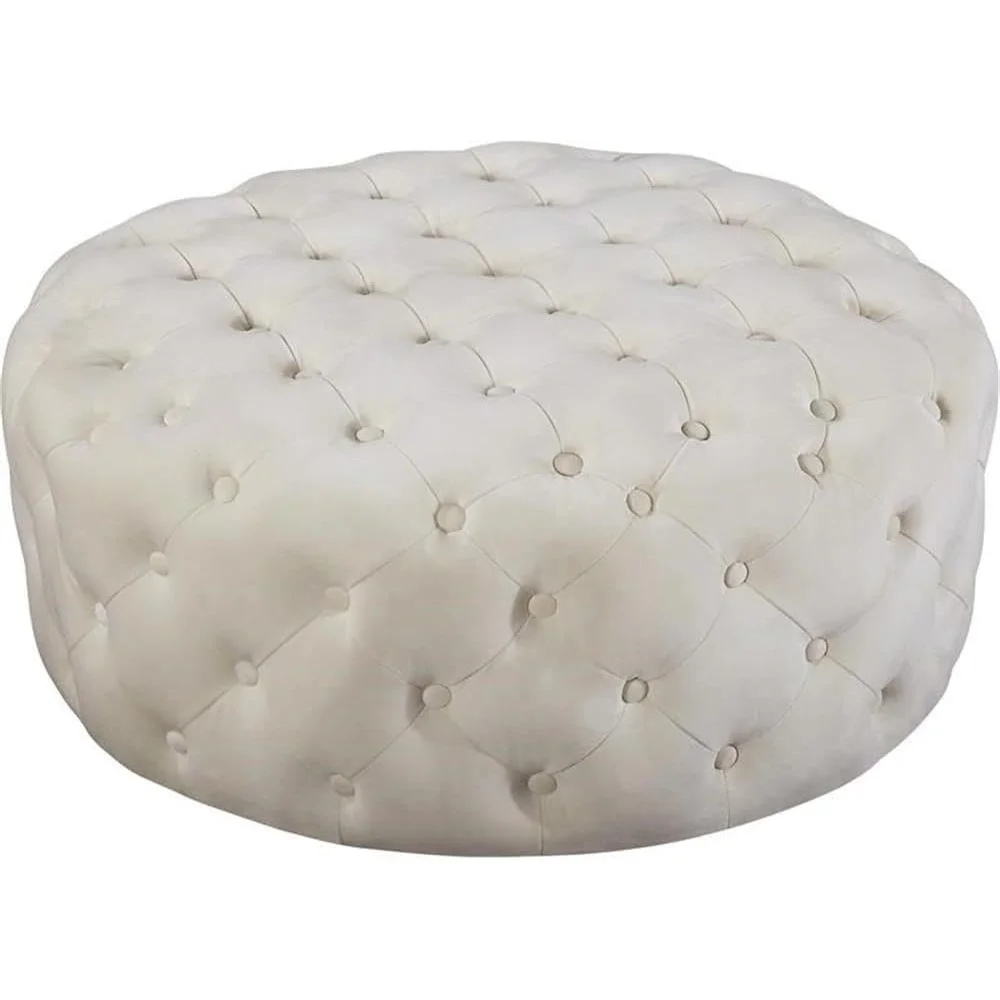
XI. Maintenance Made Easy: Keeping the System Working
Even the best organization system requires maintenance. Implementing simple routines keeps your entryway functioning smoothly without requiring significant time or effort.
Daily Quick-Tidy (5 minutes)
* Return items to designated homes before bedtime
* Hang up coats and bags left on temporary surfaces
* Place shoes in proper storage
* Sort mail into appropriate containers
Weekly Maintenance (10 minutes)
* Wipe down surfaces and storage containers
* Return any misplaced items to their proper locations
* Check for items that should be relocated elsewhere
* Sweep or vacuum the area thoroughly
Monthly Reassessment (30 minutes)
* Evaluate what’s working and what isn’t in your system
* Adjust storage as needed for changing needs
* Remove any accumulated items that don’t belong
* Deep clean less-visible areas (inside bins, under furniture)
When busy periods inevitably disrupt your system, schedule a reset session rather than allowing clutter to accumulate indefinitely. Even 15 minutes can restore basic order.
Remember that choosing the right bench with proper shoe storage initially makes long-term maintenance significantly easier, as good systems naturally encourage continued organization.
Entryway Bench with Cushion, Mudroom Bench with Cushion, Shoe Bench for Entryway
$1,186.63 Select options This product has multiple variants. The options may be chosen on the product pageCoat Rack Shoe Bench, Corner Entryway Bench, Corner Hall Tree, Shoe Bench for Entryway
$313.58 Select options This product has multiple variants. The options may be chosen on the product pageEntryway Bench with Back, Modern Entryway Bench, Shoe Bench for Entryway
Price range: $463.13 through $474.44 Select options This product has multiple variants. The options may be chosen on the product pageEntryway Bench with Shelf Storage, Shoe Bench for Entryway, Shoe Storage Bench
$194.08 Select options This product has multiple variants. The options may be chosen on the product pageCorner Entryway Bench, Entryway Bench with Cushion, Modern Entryway Bench, Shoe Bench for Entryway
$476.34 Select options This product has multiple variants. The options may be chosen on the product pageBench with Hooks and Storage, Entryway Hall Tree, Mudroom Bench with Cubbies, Mudroom Bench with Shoe Storage
$818.38 Select options This product has multiple variants. The options may be chosen on the product page
XII. Specialized Solutions for Unique Entryway Challenges
Not every home has a traditional entryway. These specialized solutions address common architectural challenges:
No Dedicated Entryway
In open-concept homes or apartments without defined entryways, create a transition zone using furniture placement. A narrow console table against the wall near your door, paired with wall hooks above, establishes an entryway zone without walls. A decorative screen or bookcase can help visually separate this area from adjacent living spaces.
Shared Entryways
For apartments or condos with shared hallway entrances, focus on just inside your door. Wall-mounted solutions that don’t protrude into walkways are ideal. Consider over-door organizers and slim cabinets that maximize vertical space without claiming limited floor area.
Multi-Entrance Homes
Homes with several frequently used entrances (front door, side door, garage entry) benefit from consistent organization across all entry points. Create similar systems at each door, scaled appropriately for each entrance’s size and usage patterns. Prioritize the most-used entrance for your comprehensive solution.
Extremely Narrow Spaces
When working with a corridor-style entryway less than 3 feet (0.9m) wide, prioritize wall storage and eliminate floor-standing furniture that narrows the passage further. Recessed shelving, floating cabinets, and wall-mounted drop zones maximize function without impeding traffic flow.
For awkward layouts like angled entryways or small corner entries, corner entryway benches provide smart solutions that maximize otherwise difficult-to-use spaces.
Wrap Up: Your Path to Entryway Transformation
An organized entryway does more than just look better—it fundamentally improves how you experience coming home and starting each day. The principles we’ve explored—assessing needs, purging excess, implementing proper storage solutions, and maintaining systems—create lasting change in this critical space.
Start your transformation with these simple steps:
1. Begin with the complete entryway purge this weekend
2. Select one storage solution that addresses your biggest pain point
3. Implement a 5-minute daily reset routine to maintain your progress
Remember that your entryway should reflect your specific household needs. Adapt these recommendations to your unique space constraints, family composition, and daily patterns. The ideal organization system is one you can actually maintain, not necessarily the one that looks perfect in a magazine.
Your entryway is both your last impression when leaving home and your first welcome when returning. By transforming this space from cluttered to functional, you’re creating a daily gift to yourself—smoother transitions, less stress, and the satisfaction of walking into an organized home at the end of each day.

